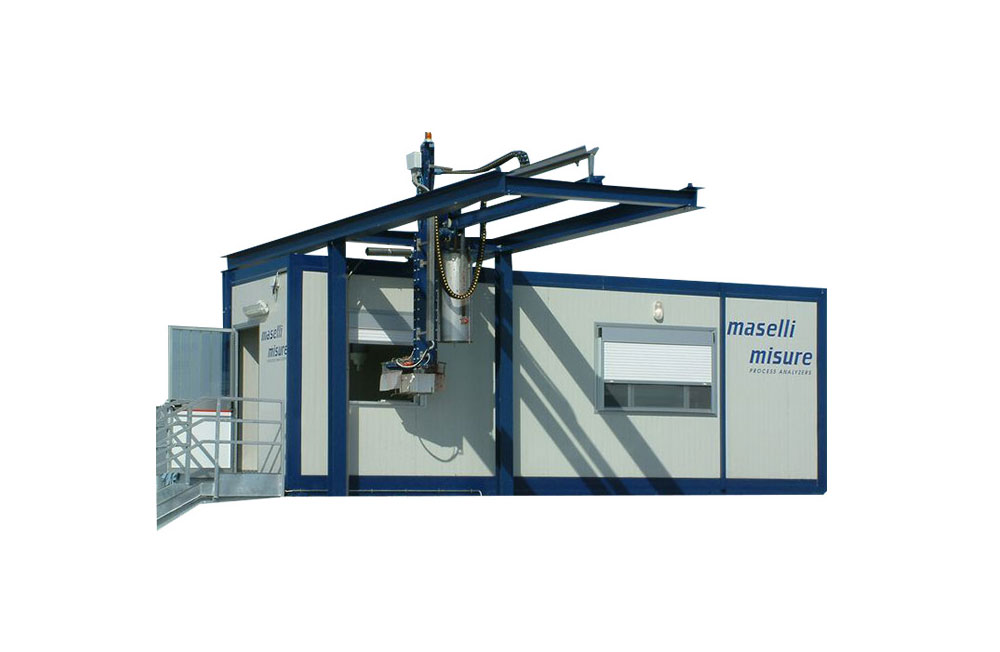Home » Tomato Grading » Quality Station » SV01 – Quality station
SV01 – Quality station
QUALITY CHECK OF THE INCOMING TOMATOES

DESCRIPTION
The SV01 station is installed at the receiving area of the tomatoes processing plant to evaluate the quality of the incoming raw fruit. The station is a turn key modular construction which consists of a truck sampler, a prefabricated module with all the elements for the check of the tomatoes and a PC handling automatically the whole system. All the cycle is very quick and only one operator can process 1 load every 5 minutes making it easy the circulation of the trucks into the factory. Each plant may personalize the software with the parameters to be checked: in average, the system is determining the percentage of waste (inerts, fruit defects, fruit illness) and the physical parameters such as Bx, pH, color and lycopene. The data gathered, which may be printed and stored in a database, not only provides a more accurate economical evaluation of the delivered fruit, but also makes it possible to send the various loads to the most appropriate processing lines and can be used to help with the making of agronomic decisions for the cultivation of the fruit in the coming years.
BENEFITS
- Turn key solution
- More than 200 installations worldwide
- Robust sampler
- Fully automatic cycle (5 minutes / truck)
- Software for data analysis
DOWNLOADS
- Brochure [PDF]
- Brochure BW [PDF]
- Video [PDF]
CONTACT US
| Application: | Complete evaluation of the quality of a tomato juice sample reduced to juice and successive measurement of the “pH”, and “Concentration” values and the “Lycopene/Colour”, on delivery to the tomato processing industry. |
| Basic functions: | Weighing a “Gross” quantity of tomato sampled and successive washing with automatic removal of earth and small inert materials. Manual grading and weighing of reject categories such as: Green, Rotten, Crushed, grouped Automatic grinding of a tomato sample. Automatic refractometric measurement of the Refractive Index of the “Tomato Juice” and display of the relative concentration in the “BRIX” scale already compensated for temperature Automatic measurement by means of “Electrode” with polymer electrolyte and display of the relative “pH” value, already compensated in temperature, by means of the Receiver provided Automatic spectrophotometric measurement of the colorimetric coordinates L, a, b and lycopene concentration levels in mg/100 g, with relative display of values. Processing the evaluation on PC and printing the relative report. |
| Weighing samples | Measurement limits: 100 kg Accuracy: > 0.02% Reading resolution: 10 g |
| Concentration measurement limits: | Measurement limits: 1.3330…1.3478 nD (0…10 Brix) Accuracy: max. accuracy ±0.0002 nD (±0.15 Brix) Measurement scale: “BRIX” referred to conversion table nD/Bx ICUMSA (1974) |
| pH measurement: |
Measurement limits: 2…14 pH Accuracy: ±0.05 pH Reading resolution: 0.01/0.1 pH |
| Color/lycopene measurement | Colour repeatability: X, Y, Z < 0.07 Lycopene measurement limits: 0…80 mg/100 g Lycpene accuracy: Higher than 5% of the given reading Maximum accuracy: 0.5 mg/100 g Lycopene repeatability: Higher than ±0.25 mg/100 g Quantity of gradable tomato: ~20 kg recommended Quantity of grindable tomato: ~4 kg/cycle Sample washing time: average 60 s with 20 kg Grinding duration: 60 s Grinding and analysis duration: 125 s Total cycle duration: average 4 min with 20 kg |
| TR01 Cycle | Quantity of grindable tomato: ~4 kg/cycle Cycle duration: Grinding 60 s – total 125 s |